Tesco’s chief product officer is in full-on Christmas mode, as he looks to help shoppers find value, but his mission is also to tackle volatility once and for all
Chief product officer Ashwin Prasad is in full-on Christmas mode. He’s just come from Tesco’s Monday morning trade meeting, “working with the teams, looking on the boards, and walking the plan, week by week”.
He’s excited at the prospect. The geese and turkeys may not be getting fat, but they’ve been frozen. And the shelves are groaning with a wide selection of goodies.
“It’s a great time,” says Prasad, in a suave, sonorous bass. “There’s a buzz around the office, and talking to colleagues in store. We all look forward to what the Christmas campaigns will be like on TV, what the great deals are that people will shop around for, and how we prepare to win. As retailers, as an industry, we put our best foot forward at Christmas, but every year, in the golden quarter, you prepare to win.”

But as prepared as Tesco is, Prasad is also worried. And it’s not the avian flu. “The thing that worries me most is customers. The challenges they face. The cost of living crisis. The way they’re thinking about themselves and their families as they prepare for winter. That’s what I’m most worried about. How we help them have a great Christmas and take some of that fear and risk away for them.”
In the last two months particularly, Tesco has seen a marked shift in customer behaviour. “Shoppers are trading down, basket sizes are decreasing, and customers are shopping more frequently, which is an indication they’re thinking about their budgets in a much more planned way. We want to make sure we deliver a great Christmas in spite of that.”
That means offers like Tesco’s Christmas dinner for five for under £25, an all-frozen affair, including a 1.5kg turkey (see overleaf). It’s also introduced a five-for-four deal on frozen items, the latest in an arsenal of value weapons, alongside Aldi Price Match, Low Everyday Prices and Clubcard Prices, while locking prices on over 1,000 items until the new year. “Value is and will continue to be the most important thing we do. ”
This is the third Christmas Prasad has been in charge of Tesco’s trading. All have been different, presenting different challenges. “They always do.” But for all his experience, it almost feels irrelevant, he admits. “In the last six months, I’ve lived five career lifetimes. I’m wondering what we were all doing before Covid, because it’s never been as busy and difficult, ever.”
Name: Ashwin Prasad
Role: Chief product officer, Tesco
Age: 46
Born: Suva, Fiji, but New Zealand Citizen
Status: Married
Education: Pakuranga College, Auckland, NZ; Auckland University; Macquarie Graduate School of Management, Sydney; Harvard Business School, US
Job history: The BOC Group 2000-2007
Various operations, commercial, marketing, product management and sales roles.
Mars Inc 2007-2010
European commercial director and UK&I marketing director for Mars Drinks.
Tesco 2010-present
Joined as senior buying manager for confectionery. Promoted to category director then various commercial director roles. Appointed chief product officer in September 2019.
Hobbies: Scuba diving, working out, watching tennis and international rugby, visiting great food and wine destinations around the world, wildlife conservation and travelling to see the world’s biodiversity.
Favourite meal: A ham and cheese toastie in all its forms. Upgrade to a ham and cheese croissant when feeling particularly boujee.
Favourite book: The World for Sale – Javier Blas & Jack Farchy.
Book you’re reading right now: Forged in Crisis – The Power of Courageous Leadership in Turbulent Times, Nancy Koehn.
Pet hates: Rudeness and lack of empathy.
Business idol and why: Satya Nadella. In the ‘re-founding‘ of Microsoft, he moved the business from a fixed to growth mindset, by visioning the world you want to create, from inquiry to curiosity and empowerment, and creating a learning organisation that is authentic and vulnerable.
The most obvious challenge has been managing inflation. From a trickle in the summer of 2021, the number of cost price increases (CPIs) has grown into a flood. It’s meant a lot more time has had to be spent on the notorious justification sheets.
“We have been meticulous in understanding [the requests] and breaking them down via a timely, rigorous and data-driven approach, so we could be completely justified in whether we accepted CPIs or not, knowing we were offering support for suppliers facing real cost of production challenges, and making swift decisions so we could keep availability going to help customers at the same time.”
In the process, there’s been some high-profile trade disputes with the likes of Heinz and Colgate. And Prasad makes no apology for these.
“We ended up in some cases taking longer than we all would have liked to resolve those and move on. The great news, and the thing to focus on, is: we did. Yes, they became a story, but we were not focused on that, we are focused on the process and ensuring we treat all suppliers the same, no matter how big.”
If anything, Prasad believes Tesco puts more focus into its smaller suppliers than its large ones, “whether through our incubator programme, the step programme, or the way we onboard, manage and exit our smaller suppliers. There’s much more senior level accountability,” he says, noting also how that was redoubled during the pandemic, when it strengthened payment terms. “And I think we’ll strengthen that even further as we go into the future,” he promises.
Prasad also rejects suggestions that innovation has taken a back seat as his teams focus on managing cost price selection. And Tesco’s selection this Christmas is testament to that.
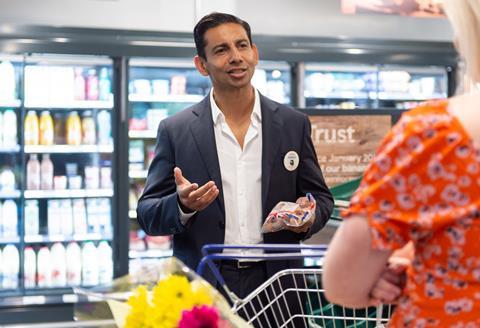
“Tesco has a history of recognising most innovation comes from the supply base. Working with our partners to activate that is the special privilege of retailers. That doesn’t change just because we have a particular focus on value. But customers want help primarily right now on affordability. So we have to lean into that.”
But it’s not just about value. A very close second to value, in Prasad’s book, is getting on top of availability.
“In that transition we’ve seen on volume, migrating into own-label, value is one thing, but making sure that as they’re looking for our help, we’re really there on availability is just as important. That the products they’re looking for are on the shelf.”
So Prasad has made it his mission to address the issue of supply chain resilience in new ways, issuing a call to arms at the recent IGD conference for suppliers to unlock “the interlink between value and availability”.
Normalising volatility
From Brexit to the Beast from the East, from Covid and the supply chain crisis in the second half of 2021, and now the war in Ukraine, “what is clear is that the level of volatility has increased”, he told delegates.
Under the circumstances, it would be understandable if suppliers look to “just keep calm and carry on” as they have, in the hope that “if they do everything right, soon that volatility will normalise again and we will get back to a place where we can rely on the great processes and systems we all had in place to manage this industry, and supply all the great products at great value for customers again.
“But what if the concept of permacrisis doesn’t change?” he asked. “The reality over the last 20 years is we have become more efficient because of a history of supply chain development. Making products much more in real time, not holding too much inventory, shutting down redundant space, warehouses and DCs.
“If we’re honest a lot of that will have given us a cost advantage. We’ve also looked to consolidate to less sources of supply, to become more efficient, and make that system work end to end much more efficiently.
“However, if volatility becomes the new normal, we need to shift our approach. We need to start thinking about what our joint business looks like in the context of permanent volatility. To manage volatility better.
“It doesn’t mean trying to mitigate against everything, because you are always going to be impacted in a crisis. The challenge is, what do you do to absorb that impact? Because there has to be an aspiration to tackle the volatility more systematically.”

There are three areas in which Prasad sees the potential to improve supply chain resilience. The first is flexibility. Prasad notes how, in the early days of Covid, the industry demonstrated flexibility in the form of inventory and network capacity. Like the switch from cans to glass. “In that summer of 2020 we couldn’t go to the pub, so customers came to our stores and guess what? There was an aluminium shortage. So we shifted inventory from cans to bottles, very quickly.
“Or there’s flour bags: we had to go to 10kg bags and figure out how to get that to customers when the mills were closed. There were many examples like these in Covid, where the form of inventory changed. And then where the inventory was in your network, the shape of inventory and network capacity meant we had to adapt quickly. We need that sort of flexible mindset.”
Some industry leaders have suggested food security concerns will mean more local sourcing to mitigate risk, but if Covid is anything to go by, the opposite is true. To ensure continuity of supply “we looked all round the world to see where we could get new products from and new sources of goods. That balance between cost efficiency and diversifying your supply sources and network capacity became really important.” And it’s just as important today, he argues.
“We need to start thinking about what our joint supply plans look like in the context of permanent volatility”
A second concern is over visibility. Or rather the lack of it. As Tesco has discovered, “no matter how good your tier one supply, if there’s a critical ingredient, like the aluminium situation, no matter how great my relationship with Britvic, Coke, AB InBev”, the supply chain is still vulnerable.
“We need to look much further into tier two and tier three to deliver against a promise of availability. When we think about volume with [fresh produce suppliers like] Branston, we work together on customer demand, to see whether we have enough potatoes and how we might bring supply forward from other farmers to extend supply. That’s great. But what about one step beyond that? What if suddenly their chemical suppliers or fertiliser suppliers experience an issue? We’ve all seen that with CO2 as well.”
Nor are customers willing to accept a trade-off on quality to ensure continuity of supply, he says. “Customers are feeling challenged on value, they want help, but what they don’t want is for us to compromise on the process of our sourcing and doing the right thing in our supply chains. ”
And the final piece is around planning. “We’ve always planned,” says Prasad. “Over time we’ve centralised ordering, with algorithms able to adapt to localised weather systems, able to drive efficiency, but technology has moved on so much we have an opportunity to go again, to match volatility and to respond even faster. We have to take that opportunity.”

That means digital transparency. “Wouldn’t it be great if we could see what stock levels were digitally in the stores and in the depots, so we turn that physical inventory and those physical conversations into digital ones. That shift, that next move, feels like an important area of transformation. Moving further into digitising your inventory, and understanding where it could sit wherever it is in the supply chain and be common in that data just improves your resilience again. ”
Another area of opportunity is “continuous analysis”.
“We’ve all got platforms and systems based on historic reporting periods. That works in periods of stability. But we need continuous analysis. It needs to be always on. So the question is: what would we have to do to change with that level of data coming out?”
How to make the step change
The step change Prasad wants to achieve on resilience sounds like a tall order for an industry dealing with so many immediate challenges. But Prasad believes there must be an aspiration to get back to the 98.5% availability level that was the norm pre-pandemic.”
And to do that will require buy-in at the most senior levels. “It needs to be elevated to a c-suite level conversation. The sponsorship cannot be left for the supply chain teams and trading teams to work out, it has to start with a strategic conversation. Because if it needs investment decisions or sponsorship, with c-suite engagement, it gets it.”
As to the time frame, Prasad believes it needs to be soon. “I haven’t come up with a time frame but clearly the sooner the better. Let’s have some urgency. It can’t take two to three years, put it that way, because the promise to customers is lost.”
And what of Tesco’s role in all this? Are its own systems and processes good enough? Patently not, Prasad admits. “Our internal measure of availability is 94.9%. It’s the best it’s been since May. So the work has improved. That’s our current performance. What the teams have done is look at all the points of failure, from the factory floor to our shelves, whether it’s in the inbound, in our depots, or in our processes in the backroom of the store.
“All of that is where we’re finding opportunities to optimise and collaborate, and the opportunities are different with different suppliers, but it has to be end to end, and the focus on availability for us is not just a supply chain team challenge. It’s the accountability of all of the teams in our suppliers and at Tesco as the retailer. And you’ve got to look at it in that way. Because the answer in step changing resilience and doing something different may not lie in a specific area. It might lie in a combination of many little helps.”
At this bleak time, for customers, and for the industry, Prasad remains optimistic. Or perhaps the better word is resolute. And again he takes inspiration from the pandemic. It was, he says, the proudest moment in his career and his greatest learning.
“The way Tesco colleagues – but I could extend that to the rest of the retailers and their teams – the way we came together as an industry, with our supply partners, to work together, to deliver for communities in a way they needed us to, it taught me something.
“The platform to be able to change society for the better, to help people through difficult times, has been my proudest achievement and has given me a lot of resolve about the things we need to do to change, and our ability to make that change.
“We came together and did something pretty amazing. We looked after communities and families and we helped when customers were looking for help. And they’re looking for help from us now and they’re looking to us to make sure, as we face this challenge, for as long as it endures, and the challenges we are yet to face, that we are helping them.”
Tesco’s Christmas for every taste and every budget
From cola-cured gammon joint to Wicked Kitchen maple & bourbon no-gammon joint; from Espresso Martini Dessert to tiramisu panettone, Tesco has options this Christmas for every taste and every budget.
And budget is front and centre of Tesco’s focus. In its Christmas TV ad, Tesco promises “more pigs in more blankets for more people”; “award-winning wines that deliver on budget”. “The only things we’ll cut are prices – and cake,” it adds. A promise that seems unlikely amid the rampant inflation, but at least it’s locking 1,000 prices till 2023.
That includes the prices on items in the ad’s Christmas dinner meal deal: it comprises eight frozen food items, including a 1.5kg frozen turkey, and promises to feed “at least” five people for less than £25. The latest in a series Tesco highlights in its magazine, it works out at £24.05 and is an “iconic” deal, says Prasad.







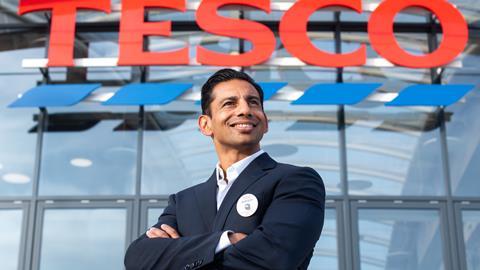

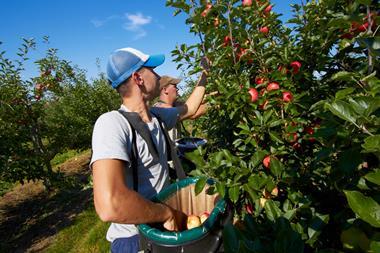


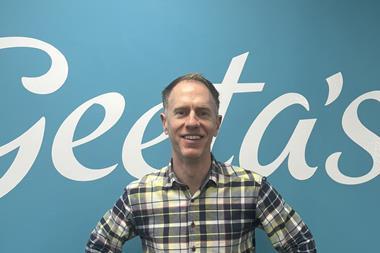



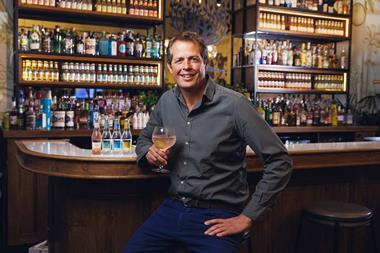
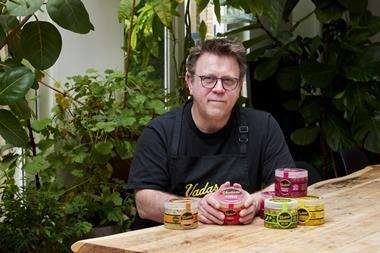
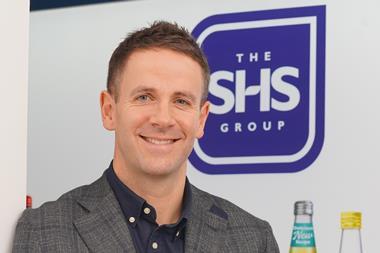
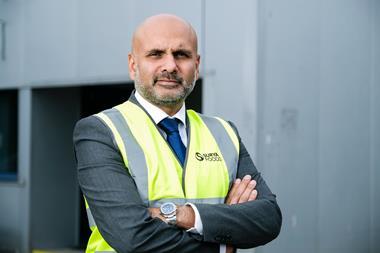
No comments yet